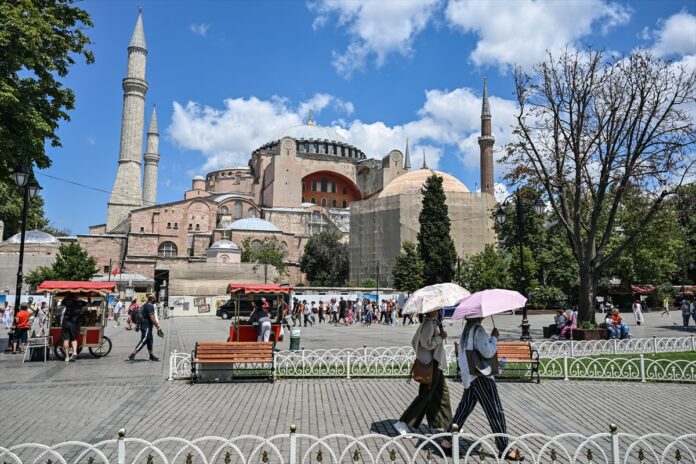Ottoman Sultan Mehmed the Conquerer performed his first Friday prayer after conquering Istanbul in 1453.
The Hagia Sophia’s history spans over 1,500 years, and it has served various roles throughout the ages, from a church to a mosque and eventually a museum.
The construction of the Hagia Sophia began in the year 532 CE during the reign of Byzantine Emperor Justinian I. It was designed by the architects Isidore of Miletus and Anthemius of Tralles and was completed in just five years, opening its doors to the public in 537 CE. The name “Hagia Sophia” means “Holy Wisdom” in Greek and was dedicated to the Wisdom of God.
The Hagia Sophia served as the principal church of the Byzantine Empire and the Patriarchate of Constantinople, playing a significant role in the religious and political life of the empire. Its grand architecture and innovative engineering, including a massive dome, vaulted ceilings, and elaborate mosaics, made it an architectural marvel of its time.
In 1453, during the reign of Sultan Mehmed II, the Hagia Sophia faced a significant transformation. Following the Ottoman conquest of Constantinople (now Istanbul), the building was converted into a mosque. The Ottomans added Islamic architectural elements, such as minarets, a mihrab and a minbar while preserving much of the original Byzantine structure.
The Hagia Sophia then served as a mosque for nearly 500 years, becoming one of the most important religious and cultural centres in the Ottoman Empire.
But after the fall of the Ottoman Empire and the establishment of the Republic of Turkey in 1923 under the leadership of Mustafa Kemal Atatürk, there was a significant push towards secularisation. Thus, in 1935, the Hagia Sophia was turned into a museum as part of Atatürk’s efforts to transform Turkey into a more secular state.
Subscribe to our newsletter and stay updated on the latest news and updates from around the Muslim world!
However, on July 10, 2020, the Turkish Council of State issued a ruling that the Hagia Sophia’s conversion to a museum in 1935 was illegal. Subsequently, on July 24, 2020, Turkish President Recep Tayyip Erdoğan signed a decree that converted the Hagia Sophia back into a mosque.
This decision sparked various reactions from around the world, with some countries expressing concerns about the preservation of its cultural and historical significance.
SOURCE: AA and 5PILLARS



















